



My shop is temporarily closed .
I invite you to take a few minutes to explore the blog.
Try a free pattern!
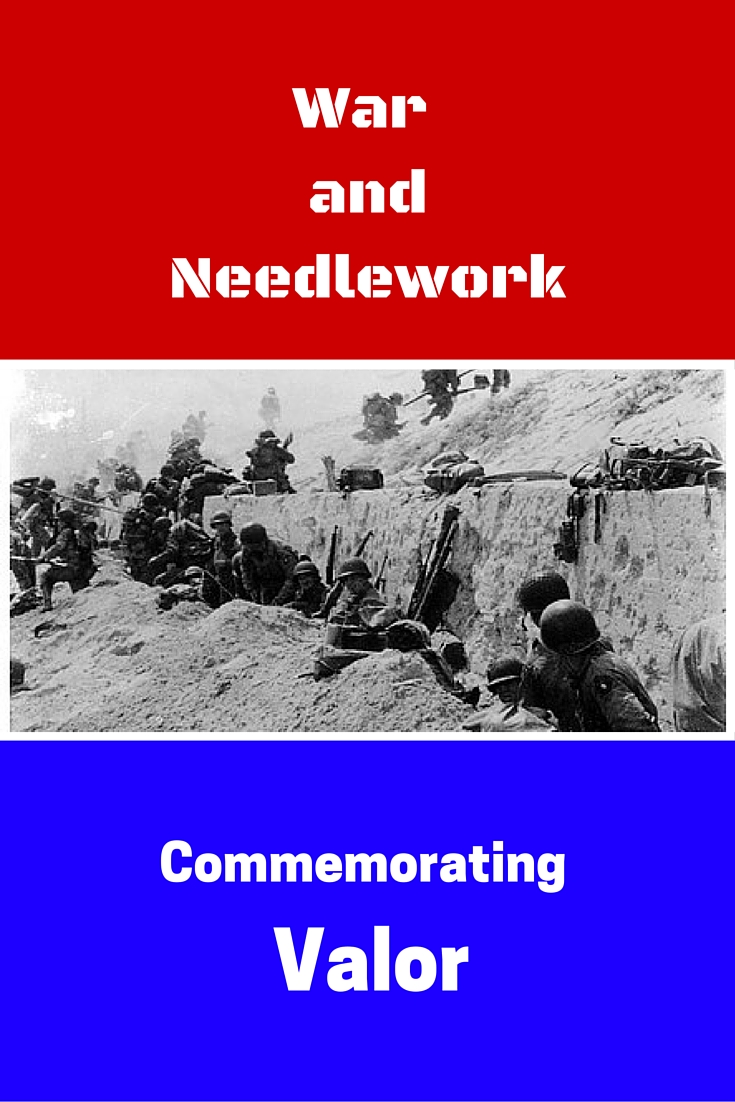
Blankets, quilts, socks, uniforms, flags - all are items sewn for warriors throughout the centuries. Whether made by hand or machine, many relatives (usually women) have stitched items for their loved one to take with them into battle. In addition to making necessities for war, needlework has also been used to tell stories about war. One of the most famous uses of needlework to tell a story of war is the Bayeux Tapestry. Consisting of eight sections of embroidery, the tapestry tells the story of how William of Normandy conquered England at the Battle of Hastings in 1066.
.jpg)
Fast forward some 800 years to another military operation just as significant to England and this time, to the free world, as the Battle of Hastings. I am talking about Operation Overlord (also known as D-Day). On June 6, 1944, soldiers representing 12 nations invaded the beaches of Normandy, France to free Europe from the control of Nazi Germany. Keep reading to see how a warrior of this famous expedition used needlework to tell the story of bravery and heroism of this turning point of World War II.
By 1940, German troops under Adolph Hitler had conquered France, the Netherlands and Belgium. England was being bombarded by Nazi air raids as Hitler was dreaming of crossing the English Channel to take control of England. Knowing that Hitler had to be stopped, Allied leaders began planning to free Europe of his grip.
Unable to push the Nazis out of Western Europe, Allied leaders (US, Great Britain) devised a plan to storm the Normandy beaches of France from the English Channel. At dawn on June 6, 160,000 Allied troops, 5.000 ships, and 13,000 aircraft left Portsmouth, England to cross the English Channel and face Nazi barricades and gunfire as they stormed the beaches. It was the largest air, land, and sea operation taken before or after 1944.
Normandy Coast Today
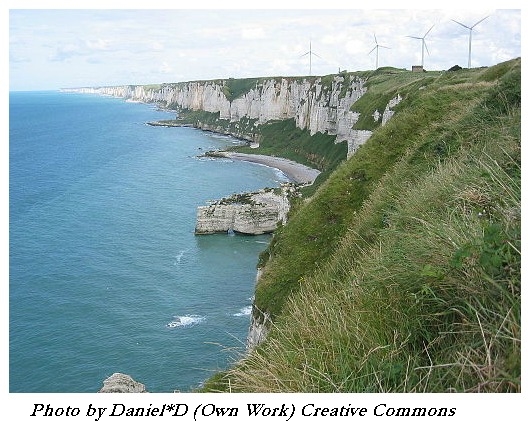
As landing craft approached the coast these photographs and the following description show what the troops faced.
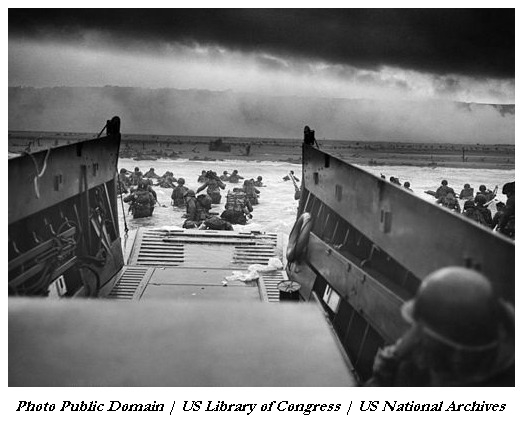
.jpg)
"The boat ramp goes down, and then jump, swims, run, and crawl to the cliffs. Many of the first young men (most not yet 20 years old) entered the surf carrying eighty pounds of equipment. They faced over 200 yards of beach before reaching the first natural feature offering any protection. Blanketed by small-arms fire and bracketed by artillery, they found themselves in hell." http://www.dday.org/overview/
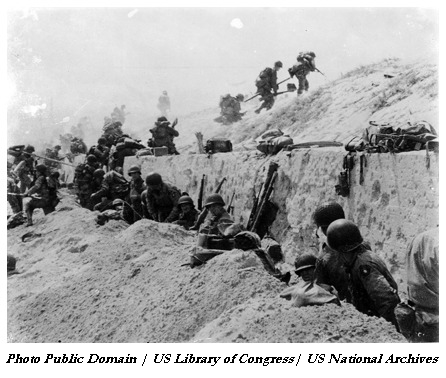
When the invasion was over, some 9,000 soldiers lost their lives but 100,000 survived to complete their mission of freeing the French, Dutch, and Belgians of Nazi occupation.
In 1968, a veteran of Operation Overlord, Lord Dulverton of Batsford, England, decided that the story of D-Day should be told. As heir to the Imperial Tobacco Company, he used his wealth to spearhead the making of a “Bayeux Tapestry” type depiction of Operation Overlord. He commissioned the Royal School of Needlework and artist Sandra Lawrence to make his vision a reality.
Ms. Lawrence began by studying military photos of the invasion. She then sketched scenes of the story. After getting the approval of Lord Dulverton, she painted 34 panels, 8 x 3 feet long, in watercolor. As she finished each panel, 25 needlewomen at the Royal School would turn her renderings into embroidery panels. Today, all 34 of the watercolor panels hang in the US Pentagon in Arlington, Virginia (USA).
The needlewomen began by transferring the designs from the art work to linen panels. They used a technique from the Tudor years (1485-1603) called “pricking and pouncing”. First they pricked holes in the linen background. Then they rubbed black powder (pouncing) into the holes. This created dots in the linen which formed an outline of the watercolor panel. You can read more about the process here. https://theddaystory.com/discover/overlord-embroidery/
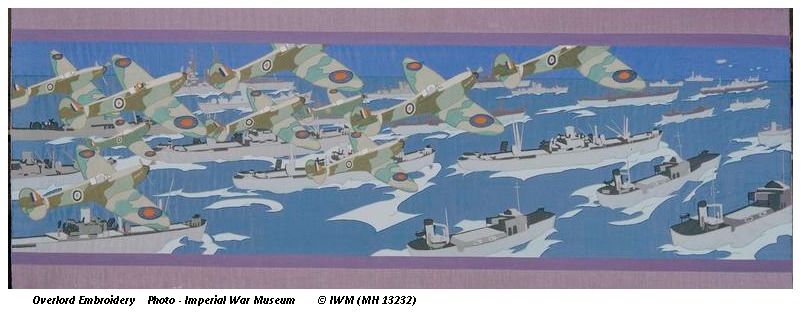
 22 count caption.jpg)
Some fifty types of fabric were chosen for the renderings. Fabric came from Allied and German soldiers’ uniforms, lace for a woman’s dress in one panel, and gold braid for King George VI‘s uniform. Thousands of pieces of fabric were cut to match the color and shapes of each painted panel. Then a needle worker would fit the fabric pieces inside the dotted outlines on the linen. It must have been like putting a jigsaw puzzle together. The fabric pieces were then sewn on the linen and finished with applique. Details of faces were embroidered.
 22 count caption.jpg)
 22 count caption.jpg)
One of the most well-known panels, Panel 28, depicts the major leaders of the operation.
.jpg)
After four years of stitching, the story of Operation Overlord came to life. Together the 34 panels measure 272 feet long. It is longer than Lord Dulverton’s inspiration for the project, the Bayeux Tapestry (231 feet long). Because of its size, there was no adequate place to display it. In 1984, the city of Portsmouth offered to build a museum to house the Overlord Embroidery. Today you can see the Embroidery in the D-Day Museum in Portsmouth.
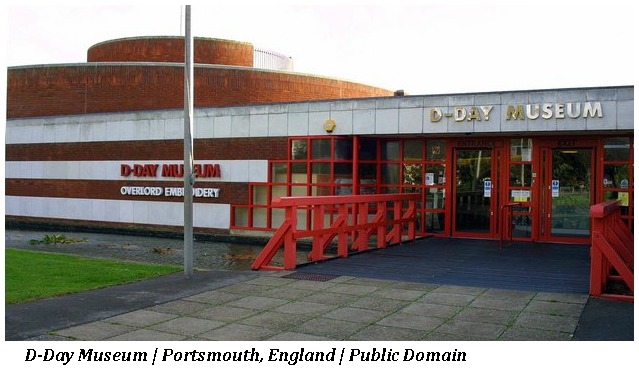
What an extraordinary way to honor and commemorate the valor of a generation of young men who sacrificed their lives to keep all of us free. Indeed, it is a unique way to tell one of the most daring events of the twentieth century.
Sources:
Bayeux Tapestry
http://www.britishbattles.com/norman-conquest/battle-hastings.htm
D-Day
https://www.dday.org/history/d-day-the-invasion/overview.html
Embroidery
http://www.americanheritage.com/content/overlord-embroidery
http://www.popularpatchwork.com/news/article/operation-overlord/4840
http://www.ddaymuseum.co.uk/d-day/d-day-and-the-overlord-embroidery
© 2016 Anne Cole. All Rights Reserved.
(This post has been updated for accuracy - May 29, 2017)
Subscribe to our email list. Get tips, announcements, updates and a free design.
Download free patterns
Follow AC Needlework on:
Facebook (Won't you like our page?)
Share This!
